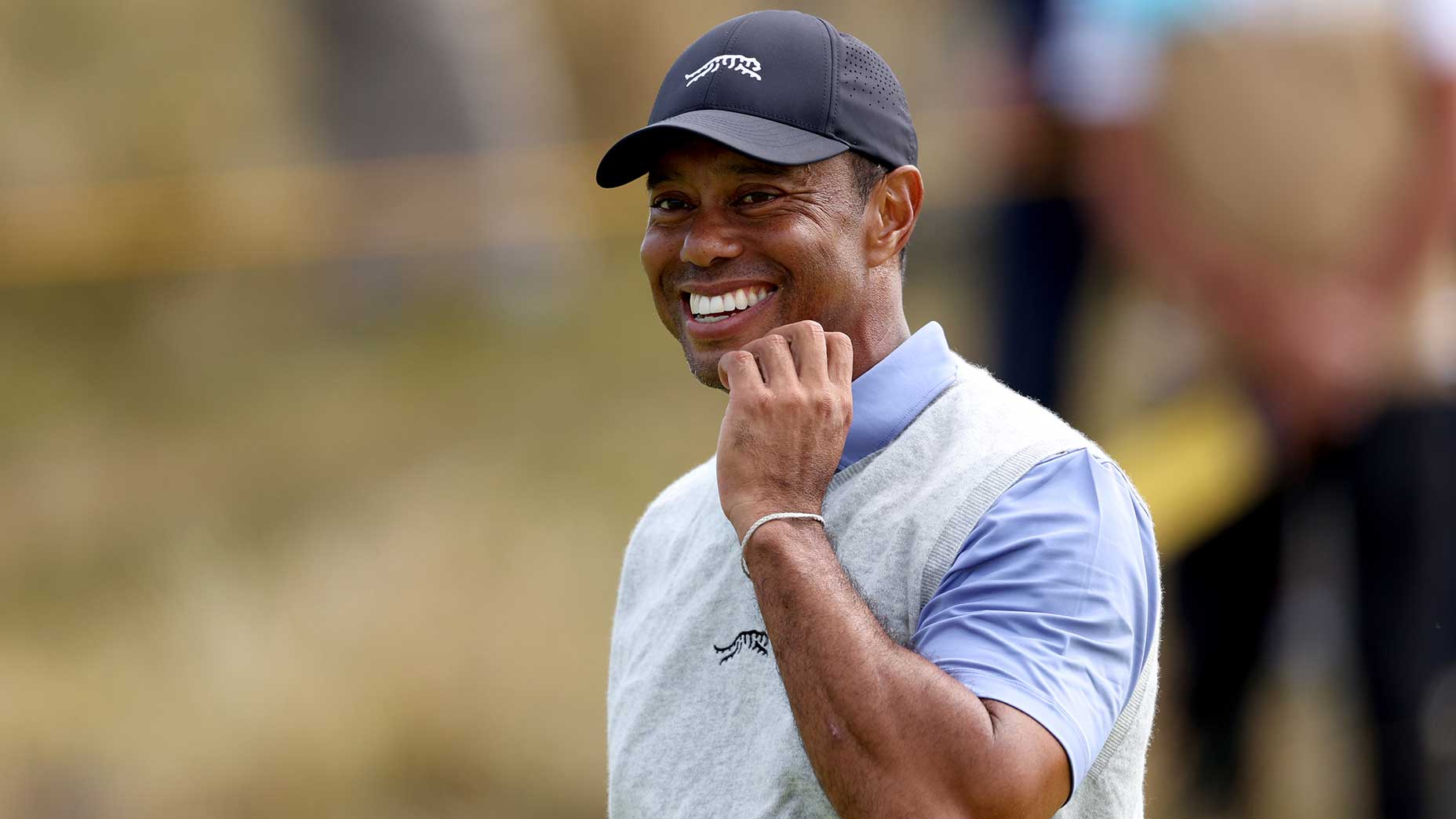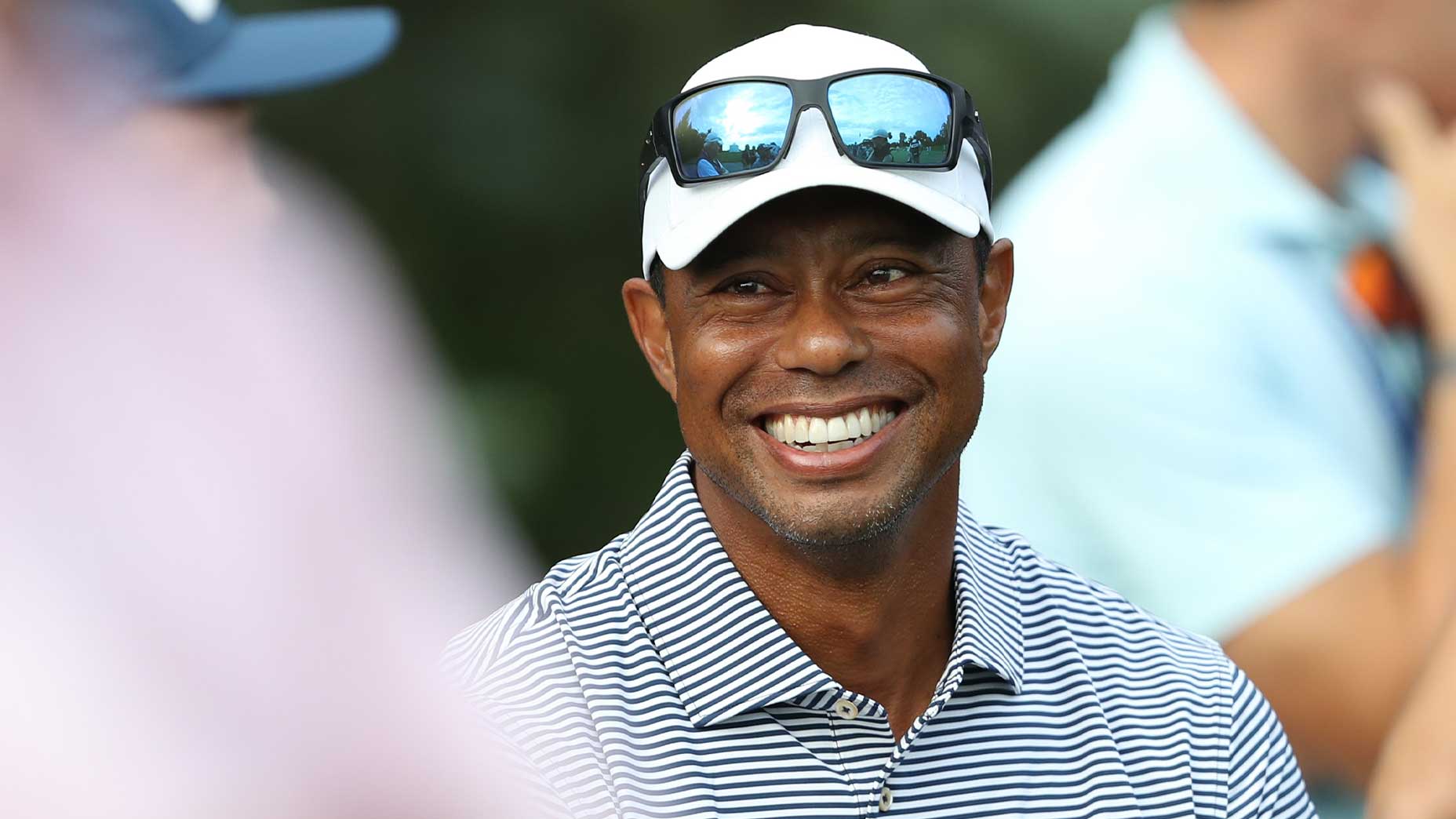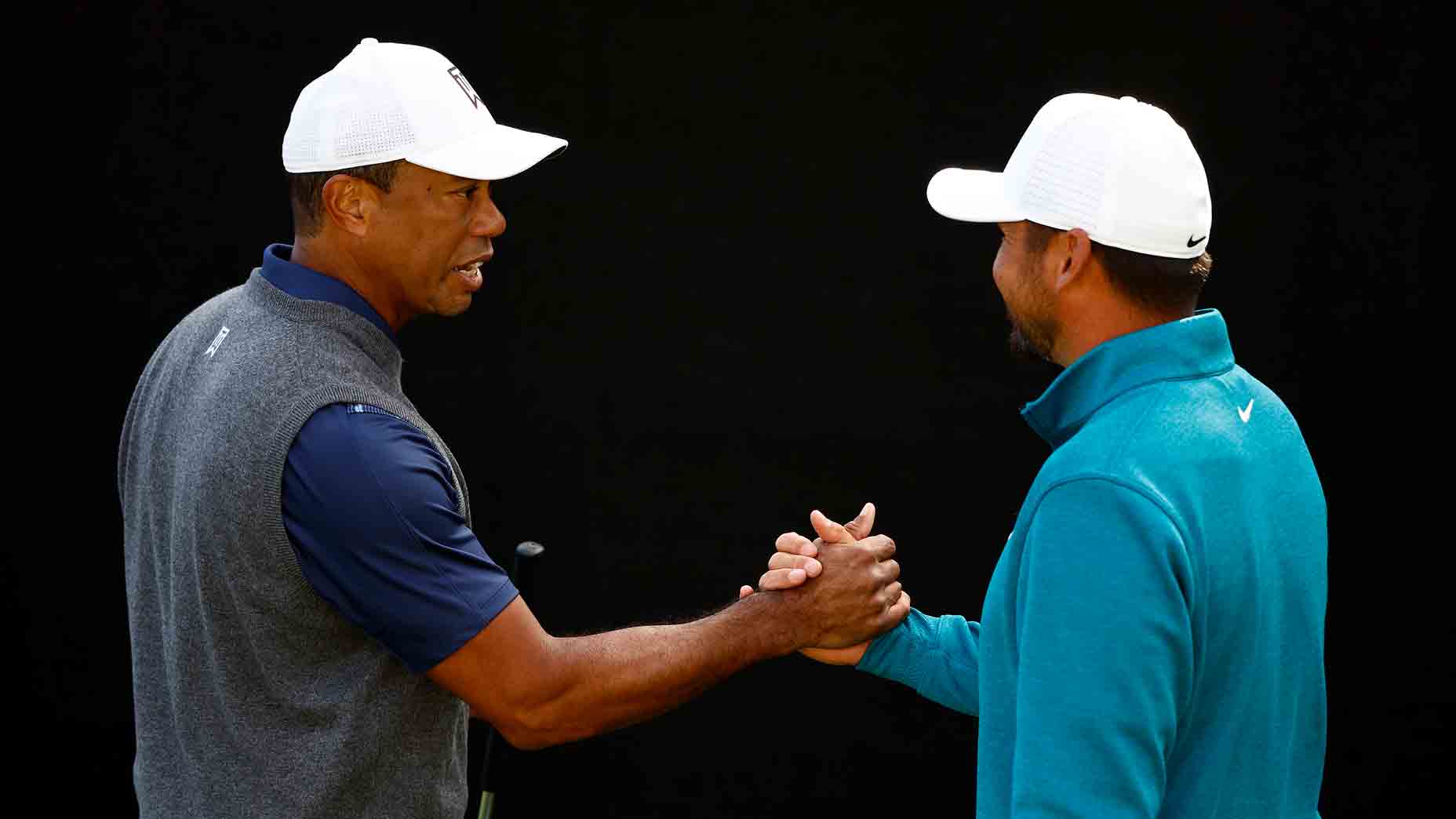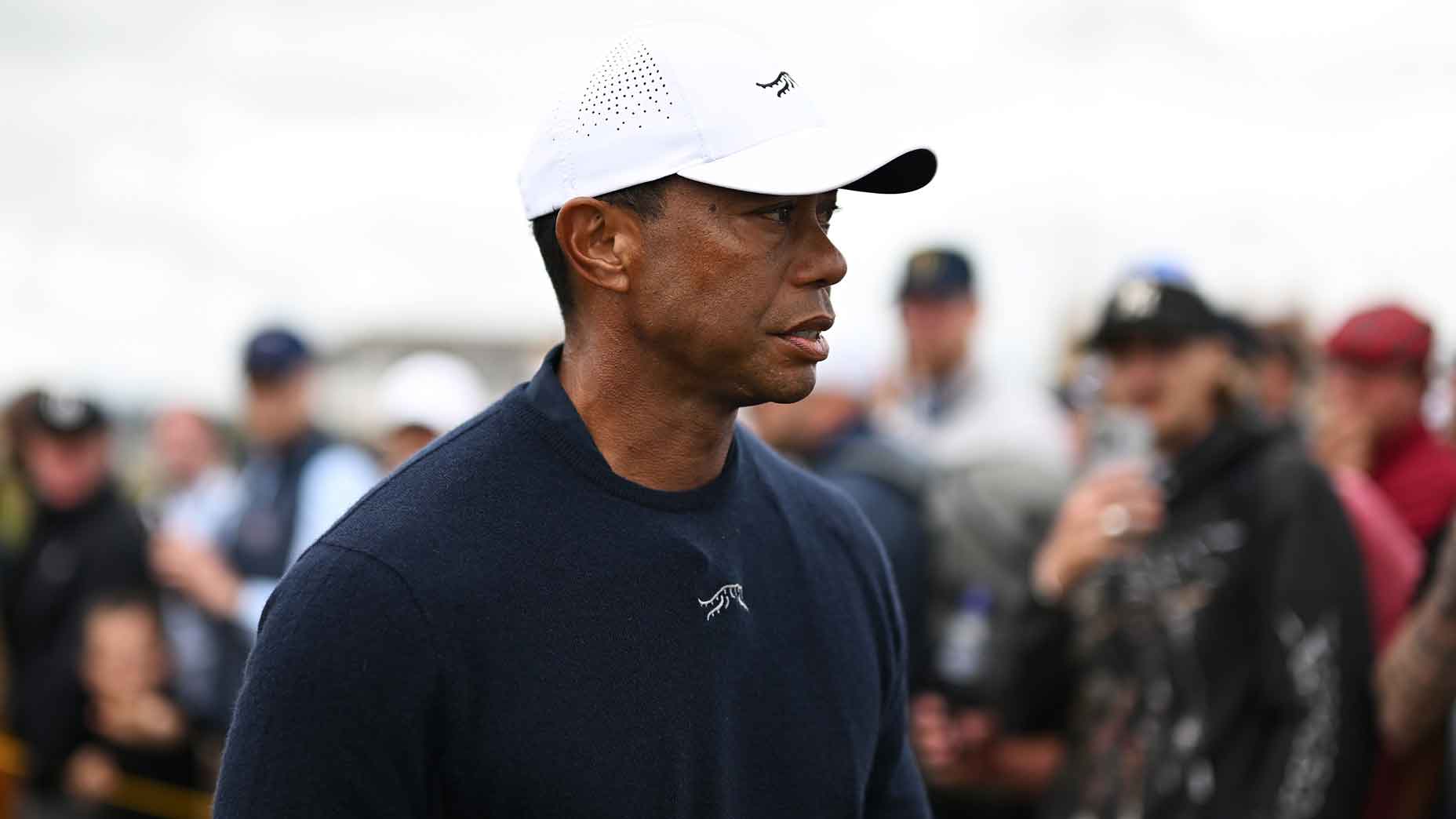Jay Monahan predicted golf’s future. Now he’s trying to salvage it

Tiger Woods and Jay Monahan spoke in direct succession for the first time in a long time this week.
Getty Images
As it turns out, Jay Monahan told us the truth all along.
The war between LIV Golf and the PGA Tour was never all that complicated. It was, as Monahan first said way back in the spring of 2022, a battle between legacy and leverage. A simple fight, on simple terms.
But it is not that way anymore.
When LIV arrived, it clung to the story of the leverage, reveling in a fight against the big, bad establishment. LIV was a band of modern pioneers with a trillion-dollar war chest, and like generations of pioneers before them, this group had arrived with one goal: to disrupt.
LIV tapped a vein with the American golf audience with this rallying cry. A large subsection of the sport was already disillusioned with the state of affairs. In their view, the PGA Tour represented everything wrong with legacy sports — conflict-averse, fun-agnostic, and soulless. LIV, on the other hand, promised something the PGA Tour could not: novelty, agility, innovation.
For the supporters, the point was not to prove that the disruptors were better, it was to prove they could disrupt the Tour’s highly corporatized image at all.
“I used to work in politics,” one LIV fan told me at a tournament earlier this year. “They’re all full of s—. It’s time to shake things up.”
Somewhere along the way, the fans got their wish. The two sides — legacy and leverage — flipped. And on June 6th, golf’s great merger was announced, and the sport unraveled.
Jay Monahan is a character study to this end. Monahan became commissioner at the PGA Tour at the sunset of a golden era after a lifetime in the heavily sanitized boardrooms of Corporate America. Tiger Woods had brought the game to unrealized heights over the previous two decades, turning golf into a cash cow, and the business of the PGA Tour into a corporate machine. Monahan, in his suits and his on-camera stiffness, was a mirror image of the legacy archetype LIV sought to dismiss.
When Monahan announced in June that he had brokered peace with LIV’s founders, the Saudi Public Investment Fund, the PGA Tour’s hypocrisy solidified in the minds of fans. Monahan had staked moral high ground against the Saudis for more than a year, famously chiding his players by asking, “have you ever had to apologize for being a member of the PGA Tour?” Now he had cozied up alongside the same questionable figures, firebombing his moral code and vindicating his opponents.
The legacy didn’t matter anymore. The leverage did.
It wasn’t until Tuesday morning that the fallout of that shift began to show itself to the golf world. After months of silence, golf fans had lucked into one of the biggest speaking weeks of the year. Tiger Woods was returning to pro golf at the Hero World Challenge after a seven-month absence, and Jay Monahan was set to speak to the New York Times’ highly influential Dealbook conference soon after. The two chief architects of golf’s future were about to speak in direct succession for the first time since the merger.
Woods went first, and he didn’t hold back. In his first public comments, the 15-time major champ admitted he was wounded by Monahan’s fashioning of the agreement. He used the same three words — that can’t happen — thrice during his presser, each time underlining Monahan’s dereliction of duty.
“We were very frustrated with what happened. We took steps going forward to make sure that we were not going to be left out of the process like we were,” he said. “I think Jay has been a part of the direction, he understands what happened prior to that can’t happen again and won’t happen again.”
In truth, Woods has all but ensured it will never happen again, filing a list of demands to Monahan in late July that shifted the brunt of the Tour’s legislative power back to the players. Tiger has long preferred sweeping gestures to the boring games of political bureaucracy, but the merger marked a turning point. He joined the Tour’s policy board as a sixth player director, a two-handed shove to the Tour’s executives that demanded a voting majority for his fellow players. Perhaps sensing his job security was tethered to his decision, Monahan quickly accepted.
Tiger’s actions must have felt familiar to Monahan. The 15-time major champ had lept into action hoping to seize control from uncertainty. In his agreement with the PIF, Monahan had done the same.
It was leverage, not legacy that tempted both men into their actions, as Monahan himself admitted from the Dealbook summit. “Going through this, I ultimately believed that the decisions I made had the PGA Tour maintaining control,” he said.
But what has leverage yielded Woods and Monahan in the battle for golf’s future? To date, not very much.
“There’s a lot of moving parts on how we’re going to play. Whether it’s here on the PGA Tour or it’s merging, or team golf,” Woods said ominously — a message Monahan repeated. “We are trying to figure all that out.”
There is a belief among both men that their actions were necessary — that golf’s future depended upon it.
“This was an existential threat to our product,” Monahan said. “That was a real thing.”
But truthfully, it was much more personal than that. From the stage at the Dealbook summit, Monahan detailed the emotional toll of the last two years. LIV had pushed him to the brink of a mental breakdown, he said, after months of sleepless nights.
“I should have been [speaking to someone], but I’m a pretty stubborn person, so I was internalizing,” he said. “On the morning of June 11th, I went on a long walk, I prayed, and I said to my wife, ‘I need help. I’m in a bad, bad, bad place.'”
The pressure forced Monahan to take a medical leave of absence, checking himself into an inpatient facility to receive treatment for anxiety.
“I knew the perception was that I was running away from a fight,” he said. “That was excruciating.”
He eventually returned to the public eye, but he had been badly wounded as the Tour’s leader. The product had undergone massive changes, the balance sheets were straining, and the players had been alienated. Monahan returned to his post to find a growing chorus calling for his job.
He has managed to cling to his role, but recent months have grown more tenuous. Players have grown increasingly critical, and Woods’ rebellion has shifted the balance of power away from Monahan. The Dec. 31 deadline with the PIF might have bought him time, but it has not bought back the confidence of his players.
Monahan’s words have done little to help. Even now, nearly six months after the agreement with the PIF was first inked, he could offer little more than an apology to the many golfers who were infuriated by his backroom dealings.
“The rollout was a failure on my part,” he said. “I’ve owned it and I continue to own it.”
As for the efforts at turning the attention forward, Monahan could offer only scant details about the state of negotiations with the PIF. Things were progressing, he said, and there was likely to be an additional private equity partner. But the rest had yet to be solidified.
“When this gets finalized, the PGA Tour is going to be in a position that the athletes are owners in their sport,” Monahan said. “You’ve got not only the PIF, but you’ve likely got another co-investor with significant experience in business, sport and brand that’s going to help take the PGA Tour to another level.”
Monahan can spin with the best of them, but even he knows these are hardly the words of the mighty behemoth. They are the words of a man — and sport — who has been dismantled, destabilized, and disassembled in the public eye. They are words of leverage, and not legacy.
This, in many ways, is precisely what fans had hoped for: disruption that changes, disruption that causes upheaval. But from the podium on Tuesday and Wednesday, we saw the complete toll of that disruption for the first time. We saw the change it engendered, and also the chaos it created — the kind that has torn a sport, a tour, and at least one of its leaders apart.
Perhaps that’s just the cost of doing business, but from the podium the last two days, the cost of doing business seemed steeper than anyone bargained for.
“You’re looking at a fundamental change in our industry,” Monahan said, looking agitated, when asked about the Tour’s decision to enter the merger. “The PGA Tour was facing an existential threat from a $700 billion sovereign wealth fund, and that sovereign wealth fund was determined to control the future of our sport.”
Monahan and Woods knew this was the end game from the beginning. They told us as much. Now the future is much less certain, except for two things.
Legacy and leverage. Disruption and destruction.











